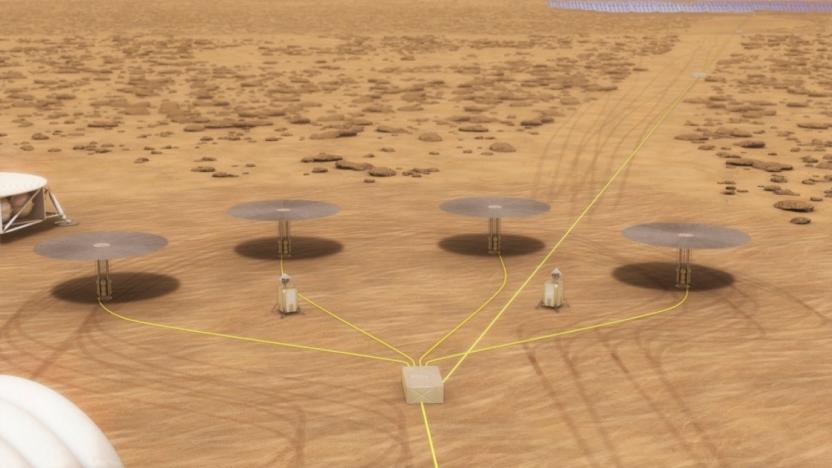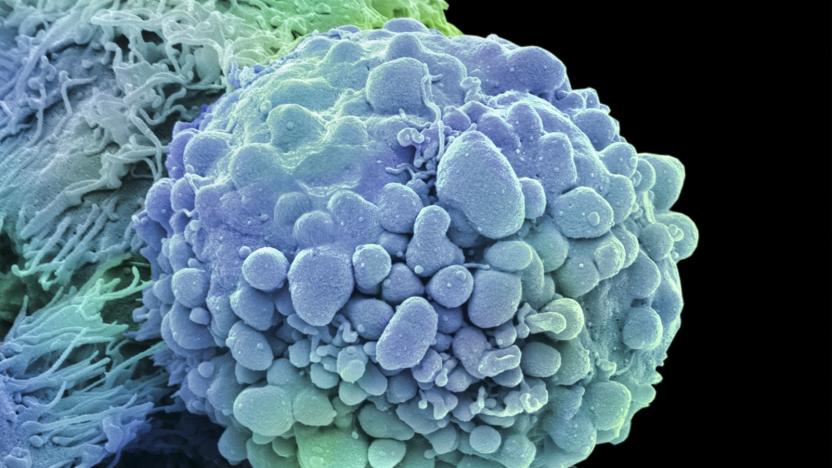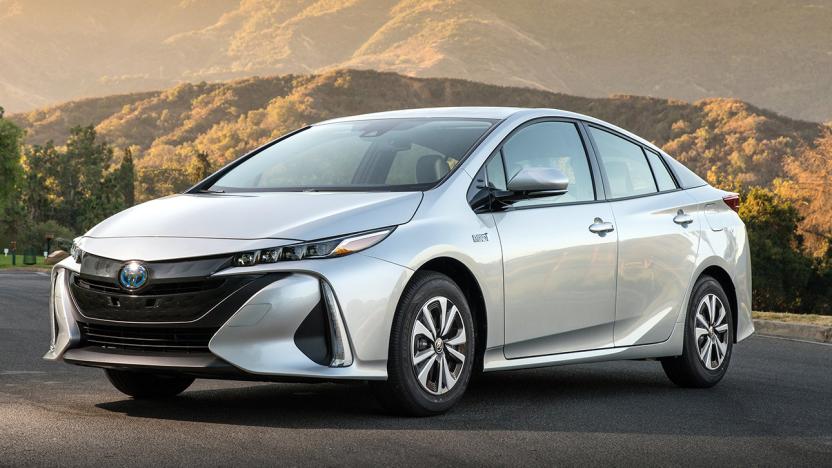LosAlamosNationalLaboratory
Latest

NASA completes full-power tests of small, portable nuclear reactor
Being able to generate power will be essential for long-term space travel. Powering a stay on Mars, for example, will require a lot of fuel, way more than we can pack onto a rocket. That's why NASA, Los Alamos National Laboratory, the Department of Energy and a number of other groups have been working on a small, transportable nuclear reactor that can reliably generate power on the go. The reactor they're developing is called Kilopower and earlier this year, they announced that they had conducted successful tests of the system. In March, the team ran the first full-power tests and during a press conference today, they reported that those tests went extremely well.

NVIDIA helps the US build an AI for cancer research
Microsoft isn't the only big-name tech company using AI to fight cancer. NVIDIA is partnering with the US Department of Energy and the National Cancer Institute to develop CANDLE (Cancer Distributed Learning Environment), an AI-based "common discovery platform" that aims for 10 times faster cancer research on modern supercomputers with graphics processors. The hardware promises to rapidly accelerate neural networks that can both spot crucial data and speed up simulations.

The Prius Prime's efficiency, and more in the week that was
What does Tesla have up its sleeve? The automaker is planning to unveil a mysterious new product on Monday, and speculation so far ranges from the finalized Model 3 to a major Autopilot update. Meanwhile, the Toyota Prius Prime received a spectacular 133 MPGe rating, making it the most efficient electrified vehicle you can buy in the US. A new European law could require all new homes to install electric vehicle chargers. And Vello launched the world's first folding electric bike that can power itself.

Fukushima nuclear reactor will get mapped with subatomic particles
Scientists from Los Alamos National Lab have discovered how to look through and map just about anything with a new process: the science-fictionally sounding muon tomography. Even in places like the highly radioactive Fukushima reactor, the method doesn't require any disassembly or any need for x-rays or ultrasound. Instead it logs the movement of muons (of course), a radioactive subatomic particle that exists, well, everywhere. Two giant aluminum sides are put either side of whatever needs looking into, and the system measures the trajectory of these muon particles. From this, the scientists are able sketch the object, given enough of the tiny things.

NASA patched Curiosity rover's autofocus problem over the air
Pardon me while I say something that might not be entirely popular: Software updates are pretty awesome. Maybe not so much for game consoles, but, I digress because the Curiosity rover recently received a patch that improved the autofocus of its "ChemCam" telescope. Over the air. On Mars. Before the update, scientists at Los Alamos National Laboratory would take nine pictures of a subject (each at a different focus) to get one usable close-up image of any of the Red Planet's rocks and soils, and send them back home. Same goes for any sample analyses the laser was doing. The problem is that for those analyses to be anywhere remotely useful, the telescope projecting said laser needs to be in focus and the workaround in place wasn't very efficient.

IBM Roadrunner retires from the supercomputer race
For all the money and effort poured into supercomputers, their lifespans can be brutally short. See IBM's Roadrunner as a textbook example: the 116,640-core cluster was smashing records just five years ago, and yet it's already considered so behind the times that Los Alamos National Laboratory is taking it out of action today. Don't mourn too much for the one-time legend, however. The blend of Opteron and Cell processors proved instrumental to understanding energy flow in weapons while also advancing the studies of HIV, nanowires and the known universe. Roadrunner should even be useful in its last gasps, as researchers will have a month to experiment with the system's data routing and OS memory compression before it's dismantled in earnest. It's true that the supercomputer has been eclipsed by cheaper, faster or greener competitors, including its reborn Cray arch-nemesis -- but there's no question that we'll have learned from Roadrunner's brief moment in the spotlight.

Roadrunner beats Jaguar in TOP500 supercomputer rankings, cartoon antics strangely absent
While titles like "world's fastest" and "world's largest" are fleeting at best, it's rare that we see such things taken down this quickly. Last week Cray delivered a big dish of braggadocio, talking up its 1.64 petaflop XT Jaguar supercomputer as the fastest (non-classified) machine in the world. Now, like some rocket skate-wearing coyote who's run out of thrust, it's been stymied by IBM's Roadrunner, deployed at Los Alamos. TOP500 is the authority on these matters and that list's latest rankings place Roadrunner in first place with a speed of 1.105 petaflops; Cray's Jag comes in second with a paltry 1.059. What about that 1.64 figure from last week? That was the hypothetical limit, and while it did deliver real-world performance of 1.3 petaflops for the folks at Oak Ridge, TOP500 relies on the Linpack benchmark for its ratings and apparently the Jag just couldn't deliver the goods there. Perhaps, Cray, it's time to make another call to ACME -- or AMD as it were.

Green Freedom turns the air's CO2 into auto-powering fuel
Tired of the air not doing enough for you? Well, a new project called Green Freedom -- headed up by researchers at the Los Alamos National Laboratory -- seeks to improve air's contribution to our planet. The new technology would provide a method of extracting CO2 from the air and then converting the gas into fuel for cars or airplanes -- thus creating a renewable energy source. The process uses a form of electrochemical separation to siphon juice out of the typically non-partying carbon dioxide, yet has a low environmental impact with a small waste-stream output. The plan calls for the use of existing plants, which will stem the need to build new facilities, enabling the environmental footprint to remain relatively small. Clearly, it's not being put into general practice yet, but it's a hopeful taste of things to come.[Via Inhabitat]





